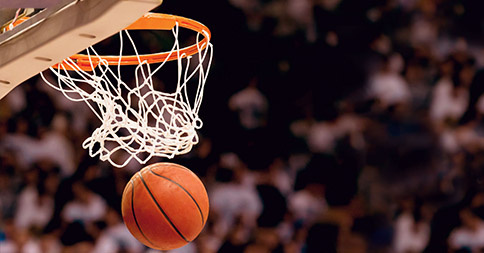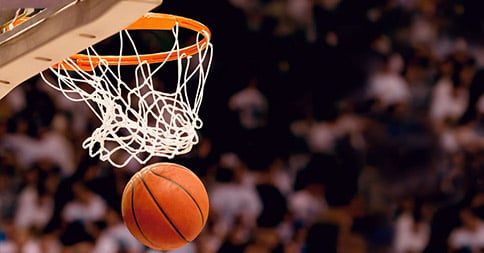We’ve mentioned before how technology in the field of prosthetics has come a long way, and how it is only gaining speed. When it comes to professional sports, there are some sectors -- like track and field -- that have already realized their prosthetic potential, and there are others -- like basketball -- that are on the verge of doing so.
Pistorius’s Flex Foot Cheetah Blades
Why are we bringing up Oscar Pistorius in a basketball article? Bear with us -- it’ll make sense in a minute.
We know he’s a controversial figure, but if we can look at Oscar Pistorius solely for his athletic ability, we find someone who became a dominant athlete in spite of having both legs amputated as an infant. By the time he was 18 years old, he was a Paralympic gold medal winner in track, and was beginning to compete in races in his native South Africa with people who were not amputees.
How was this possible? How could a man with two amputated legs compete with whole-legged men? According to a study done by the International Association of Athletics Federations (IAAF), "The positive work, or returned energy, from the prosthetic blade is close to three times higher than with the human ankle joint in maximum sprinting."
What This Could Mean for Basketball
Imagine if the technology in Pistorius’s Cheetah blade could be adapted for the basketball court. You could have a durable leg prosthesis with a smart microprocessor that doesn’t get nearly as weary as a natural leg because the returned energy would be so much higher.
And a leg that doesn’t get as weary means a player that doesn’t get as weary -- and that might sound pretty good to the NBA, which is more attuned to the wear and tear of its athletes than ever before.
What Are the Challenges?
As opposed to something like track, which is essentially a single motion sport, there are myriad biomechanical demands when it comes to basketball. Think directional changes, lateral movements, sudden stops and starts, and so on. And that’s not even considering what has to happen for an athlete to shoot the ball or get a rebound -- both of which require a very specific and complicated set of movements in the upper body.
This combination of movements in basketball is the greatest challenge to developing a prosthetic device for the players that would perform at the same level as the Cheetah blade. But the technology is on the horizon, and the science backing it up is advancing quickly.
We’ll never be able to fully replace a natural limb. But it is possible to get close -- and if technology keeps moving the way it has been, the NBA could look very different in just a few years.
BioTech Is Here for All Your Athletic Needs
No matter your lifestyle, BioTech has what you need. We work with each patient one-on-one to get the best fit possible, and we won’t stop until you are completely satisfied. Contact us today for more information!

